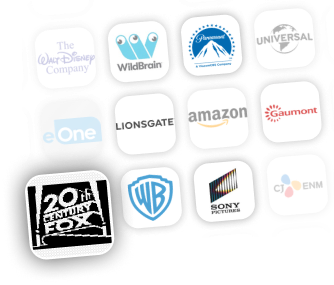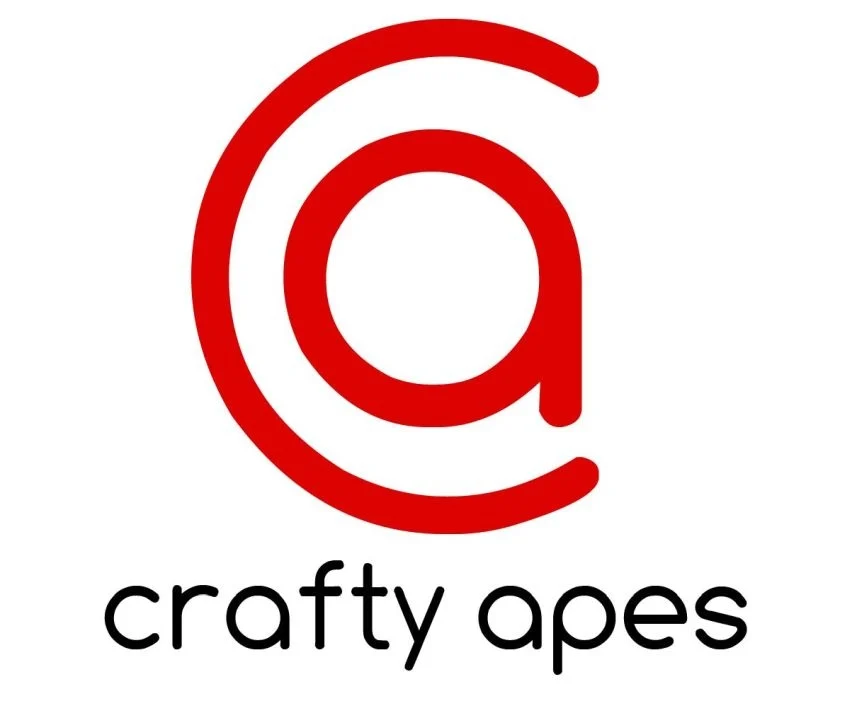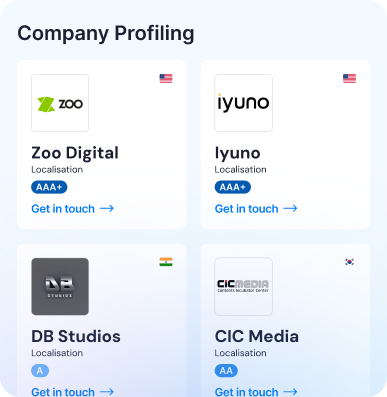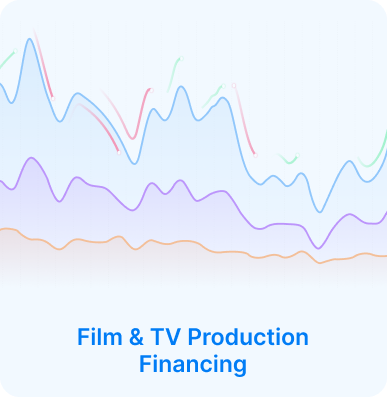Introduction
So, you’ve poured your heart, soul, and countless hours into creating a beautiful animation film.
The characters are compelling, the story is perfect, and the visuals are stunning. But now comes the big question: what’s next?
If you don’t have a plan to distribute your animation film, your masterpiece might never find the audience it deserves. It’s a problem that keeps thousands of talented producers up at night.
You see, creating the film is only half the battle. Getting it into the right hands—buyers, broadcasters, and platforms—is a completely different challenge. Without the right strategy, you’re just guessing.
In this post, I’m going to walk you through the exact five steps you need to distribute your animation film globally. We’ll cut through the noise and give you a clear, actionable playbook to get your film seen and monetized.
Curious how Vitrina can help you? Try it out today!
Trusted by global entertainment leaders to grow business, acquire high-demand content, promote projects and services, and track every Film + TV production worldwide
Table of content
- Introduction
- Key-Takeaways
- Step 1: Build Your Professional Distribution Toolkit
- Step 2: Conquer the Film Festival Circuit
- Step 3: Choose Your Distribution Channels Wisely
- Step 4: Find and Secure the Right Distribution Partner
- Step 5: Master the Art of the Distribution Deal
- How Vitrina Accelerates Your Distribution Strategy
- Conclusion
- FAQs
Key Takeaways
| Strategy | Key Action | Why It Matters |
|---|---|---|
| Build Your Distribution Toolkit | Create a professional Electronic Press Kit (EPK), trailer, and poster. | First impressions are everything. A polished toolkit shows distributors you’re serious and makes their job easier. |
| Target the Right Film Festivals | Research and submit to festivals known for animation and deal-making, like Annecy or TIFF. | Festivals generate buzz, reviews, and are a primary market for meeting distributors and sales agents. |
| Identify Your Distribution Channels | Decide between theatrical, VOD (SVOD/TVOD/AVOD), broadcast TV, or a hybrid model. | Different channels reach different audiences and have unique revenue models. Your choice defines your film’s journey. |
| Find a Sales Agent or Distributor | Use market intelligence to find partners who have distributed similar films. | The right partner has the network and expertise to negotiate deals you can’t get on your own. |
| Understand the Deal | Familiarize yourself with key terms like distribution fees, territories, and minimum guarantees. | A bad deal can mean you see little to no return. Knowledge is your best negotiation tool. |
Who is distributing films like yours?

Step 1: Build Your Professional Distribution Toolkit
Before you even think about contacting a distributor, you need to have your professional materials ready. Think of this as your film’s resume. When a potential partner asks to see what you have, you need to be prepared to impress them instantly.
Distributors are busy people. They receive hundreds of submissions. A polished, professional toolkit shows them that you’re a serious creator who understands the business side of film.
What’s in a Distribution Toolkit?
- Electronic Press Kit (EPK): This is non-negotiable. Your EPK is a digital package that should include a synopsis, director’s statement, key crew bios, high-resolution stills, and any press clippings you have.
- A Killer Trailer: Your trailer is your most powerful marketing asset. It needs to be 90-120 seconds and sell the emotional core of your film. It’s often the first (and sometimes only) thing a distributor will watch.
- High-Quality Poster Art: Your poster needs to be visually arresting and communicate the genre and tone of your film in a single glance. It will be used for everything from festival listings to VOD thumbnails.
- A Dedicated Website or Landing Page: A simple, clean website that hosts your trailer, EPK, and contact information makes you look professional and easy to work with.
Step 2: Conquer the Film Festival Circuit
Film festivals are the lifeblood of independent film distribution. They are not just about winning awards; they are a critical marketplace where deals are made. For animation, certain festivals are king.
Your goal isn’t to get into every festival. It’s to get into the right ones—those attended by the distributors and sales agents who specialize in animation.
Top Animation-Friendly Film Festivals
- Annecy International Animation Film Festival: The most important animation festival in the world. Being selected here is a massive stamp of approval.
- Ottawa International Animation Festival: North America’s premier animation festival. A major market for deals.
- Toronto International Film Festival (TIFF): While not strictly for animation, TIFF is a top-tier market where major global distributors look for content.
- Sundance Film Festival: Getting your animated feature into Sundance can launch it into the stratosphere, attracting major players.
Submitting to festivals costs time and money, so be strategic. Research each festival’s programming to see if your film is a good fit. A targeted approach is always better than a shotgun blast.
Step 3: Choose Your Distribution Channels Wisely
Not all distribution channels are created equal. The path you choose will dramatically affect your film’s reach and revenue potential. The old model of “theatrical first” is no longer the only game in town, especially for animation.
Understanding the VOD Landscape
Video-on-Demand (VOD) is where a huge portion of animation lives. It’s broken down into three main types:
- SVOD (Subscription VOD): Platforms like Netflix, Disney+, and Hulu. They typically pay a large, flat licensing fee for exclusive rights for a set period. This provides upfront revenue but no backend participation.
- TVOD (Transactional VOD): Platforms like Apple iTunes and Amazon Prime Video Rentals. Audiences pay to rent or buy your film. You get a revenue share (typically 50-70%), so your earnings are tied to performance.
- AVOD (Advertising-based VOD): Platforms like Tubi, Pluto TV, and YouTube. The content is free for viewers, and you earn a share of the ad revenue. It’s great for reach but often generates lower revenue per view.
You also have traditional channels like broadcast television and specialized markets like educational or in-flight entertainment. The best strategy often involves a “windowing” approach, where you move your film through different channels over time.
Ready to find your global audience?

Step 4: Find and Secure the Right Distribution Partner
For most producers, a distribution partner (a distributor or a sales agent) is essential. A sales agent represents your film at markets and negotiates with distributors on your behalf. A distributor acquires the rights to your film and handles the marketing and release.
But how do you find them? Cold-emailing rarely works. You need to be smarter.
This is where data becomes your secret weapon. You need to find out: Who is distributing animated films similar to yours in style, budget, and theme? Which companies have a track record of success with content like yours?
Using a platform to research distributors is no longer a luxury; it’s a necessity. You can see which companies are actively acquiring content, what they’ve bought in the past, and who the right contacts are. A targeted, informed approach will get you noticed.
Step 5: Master the Art of the Distribution Deal
You’ve found an interested distributor. Congratulations! Now comes the most critical part: negotiating the deal. A bad agreement can tie up your film for years with little to no financial return.
You must understand the key terms:
| Term | What It Means |
|---|---|
| Distribution Fee | The percentage of revenue the distributor takes. This can range from 20% to 40%. Always ask what expenses are deducted before this fee is calculated. |
| Minimum Guarantee (MG) | An upfront, non-refundable payment from the distributor. This shows they have skin in the game. An MG is always a good sign, but not always possible for every film. |
| Territories | The geographical regions where the distributor has rights. Never give away “worldwide” rights unless the deal is phenomenal. Try to grant rights territory by territory. |
| Term | How long the distributor has the rights to your film. Aim for shorter terms (e.g., 5-7 years) so you can get your rights back if they underperform. |
| Marketing Spend Cap | A cap on the marketing expenses the distributor can recoup from the film’s revenue before you get paid. Without a cap, these expenses can eat up all your profits. |
Always have a lawyer with experience in entertainment law review any contract before you sign it. This is an investment that can save you a fortune down the line.
How Vitrina Accelerates Your Distribution Strategy
Feeling overwhelmed? This is where having a powerful industry intelligence tool comes in.
Instead of guessing, you can use a platform like Vitrina to make data-driven decisions. Vitrina’s platform provides a global map of the content supply chain, helping you identify potential distributors who are actively seeking animated content.
You can analyze their past acquisitions, see what deals are happening in real-time with the Project Tracker, and find the key decision-makers to contact. It turns a frustrating search into a targeted, efficient business development process.
Conclusion
Distributing your animation film doesn’t have to be a mystery. It’s a step-by-step process that you can control.
It starts with building a professional toolkit to make a killer first impression. Then, you leverage the festival circuit to build buzz and meet partners. You make smart choices about your distribution channels, find the right partner using data, and negotiate a deal that protects your interests.
Yes, it’s a lot of work. But by following this framework, you transform from a hopeful artist into a savvy producer who knows how to get their film to a global audience.
What’s the first strategy you’re going to try? Let me know in the comments.
Ready to stop guessing and start connecting with the right global partners? Your next big deal is waiting. Take control of your distribution strategy today.
Frequently Asked Questions
Getting on Netflix usually happens through an aggregator or a distributor that has a relationship with them. Netflix rarely deals directly with independent producers. Your best bet is to secure a distribution partner who has a track record of selling films to major SVOD platforms.
While not strictly mandatory, a good sales agent is invaluable. They have pre-existing relationships with global distributors and can create a competitive environment for your film, leading to better deals. For a global release, an agent is highly recommended. >
The costs can vary wildly. If you secure a distribution deal with an MG, your upfront costs are lower, as the distributor handles the marketing spend (which is recoupable). If you self-distribute, you bear all the costs, which can range from a few thousand dollars for aggregation fees to hundreds of thousands for a significant marketing campaign.
They are connected. A major festival award (like at Annecy or Sundance) can directly lead to a much better distribution deal. The award provides validation and buzz that makes your film a hotter commodity. The ultimate goal is the distribution deal, but the festival award is often a powerful stepping stone to get there.































